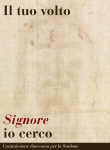THE RESTORATION
The restoration was necessary because, with the passing of time, the seams tensions were deepening the folds on the cloth and the organic residues could threaten its conservation. The scientists commission suggested the Shroud should be cleaned and kept flat instead of rolled. Between june and july, 2002 professor Flury Lemberg and her team completed in the New Sacristy of the Cathedral of Turin the delicate work of undoing, organic residues removal, substitution of the support cloth and restitching. The patches applied by the Poor Clares and the pieces of cloth burned in the Chambéry fire of 1532 were removed, the lining of Holland to which the Shroud had been fastened in 1534 was taken off to fasten to a new lining of Holland. Moreover, it was made a complete Linen digital scanning, both of the image side and of its back, and new photographs were taken.
Today, thanks to the 2002 restoring interventions, the Linen conservation state is much more better. The parts removed from the burnt patches borders have been gathered, catalogued, recorded and given to the Papal Custodian. Some operations that would have been particularly difficult to make later have also been made on the back of the Shroud by suitably built instruments. It has therefore been the object of photographic surveys and has been scanned and photographed in fluorescence. Some recordings of UV-VIS, x-ray fluorescence and Raman spectrums have also been made and all the results have been entrusted to the Papal Custodian. It will be up to the Holy See to put them at disposal for later studies.
At the same time, the Giancarlo Durante office took a complete new series of pictures. The most representative images are currently published in the book Shroud le immagini 2002 by G. Ghiberti and, as far as the scientific and photographic documentation of the restitching interventions is concerned, the dedicated book is Shroud 2002: L’intervento conservativo. Preservation. Konservierung by M. Flury-Lemberg.

